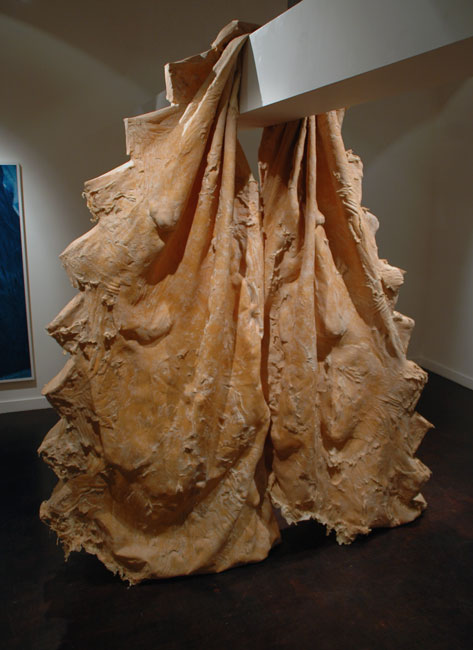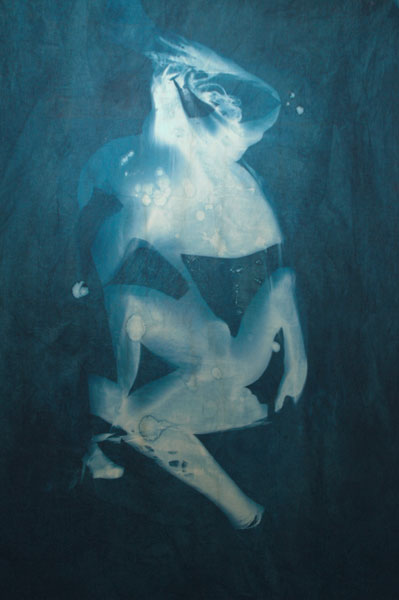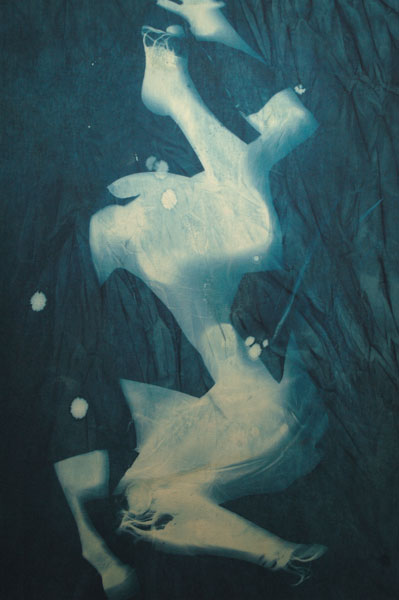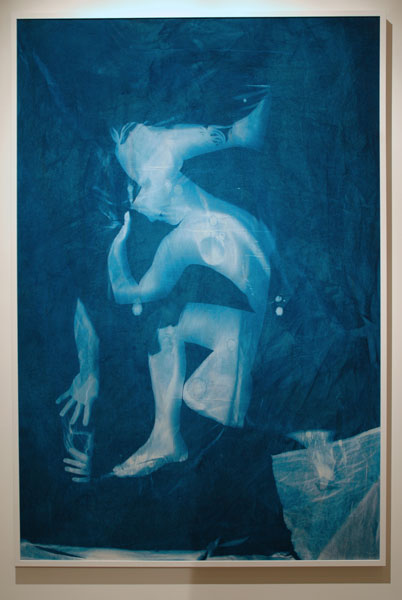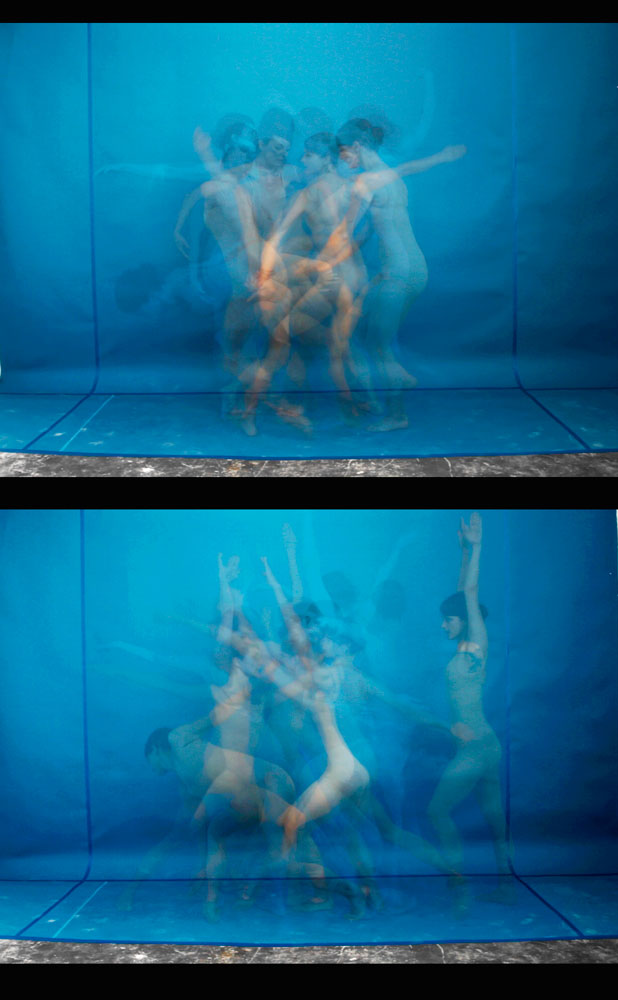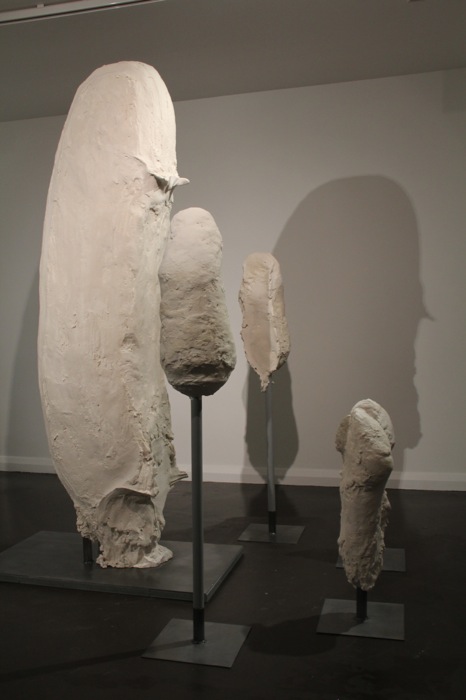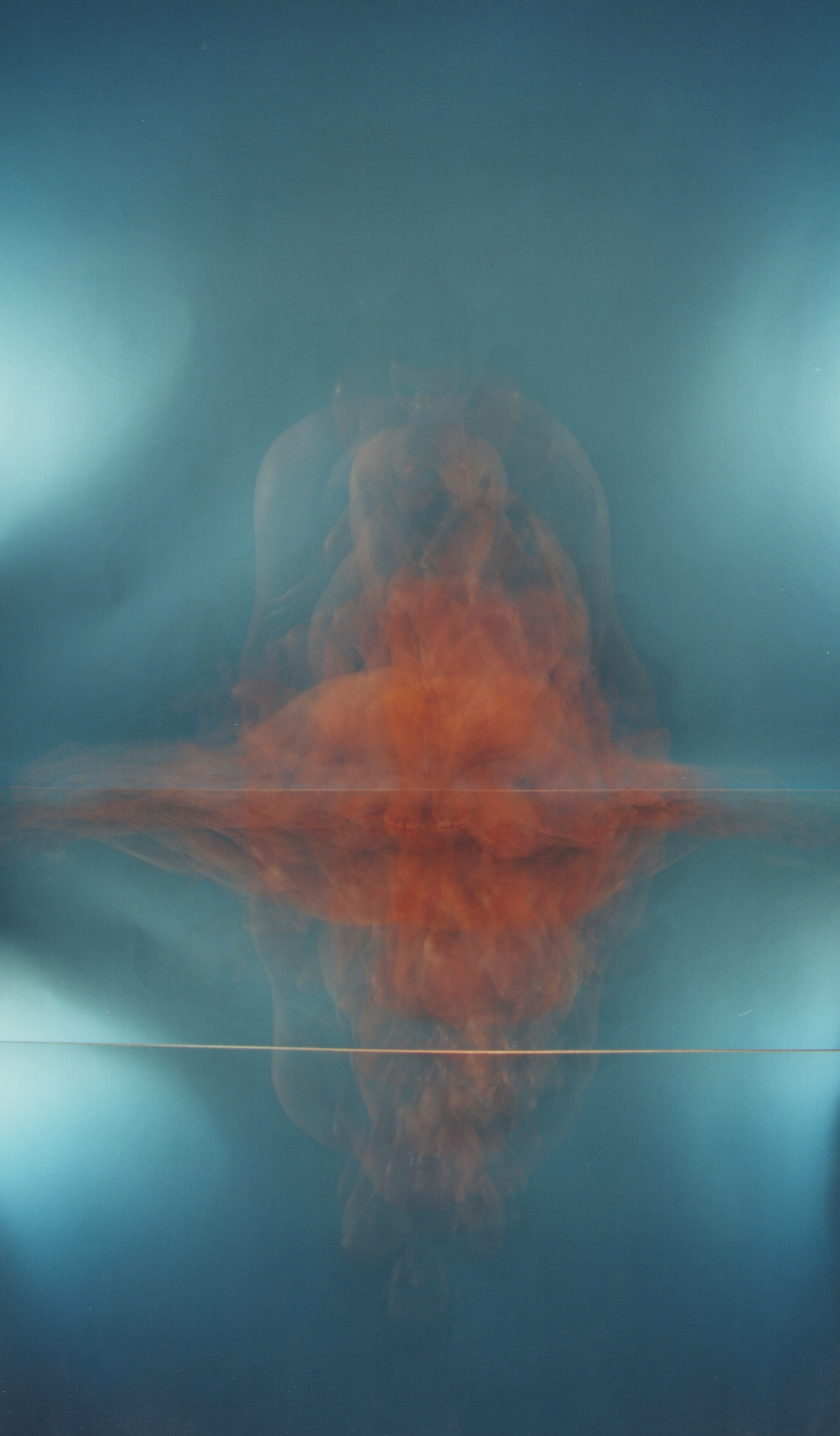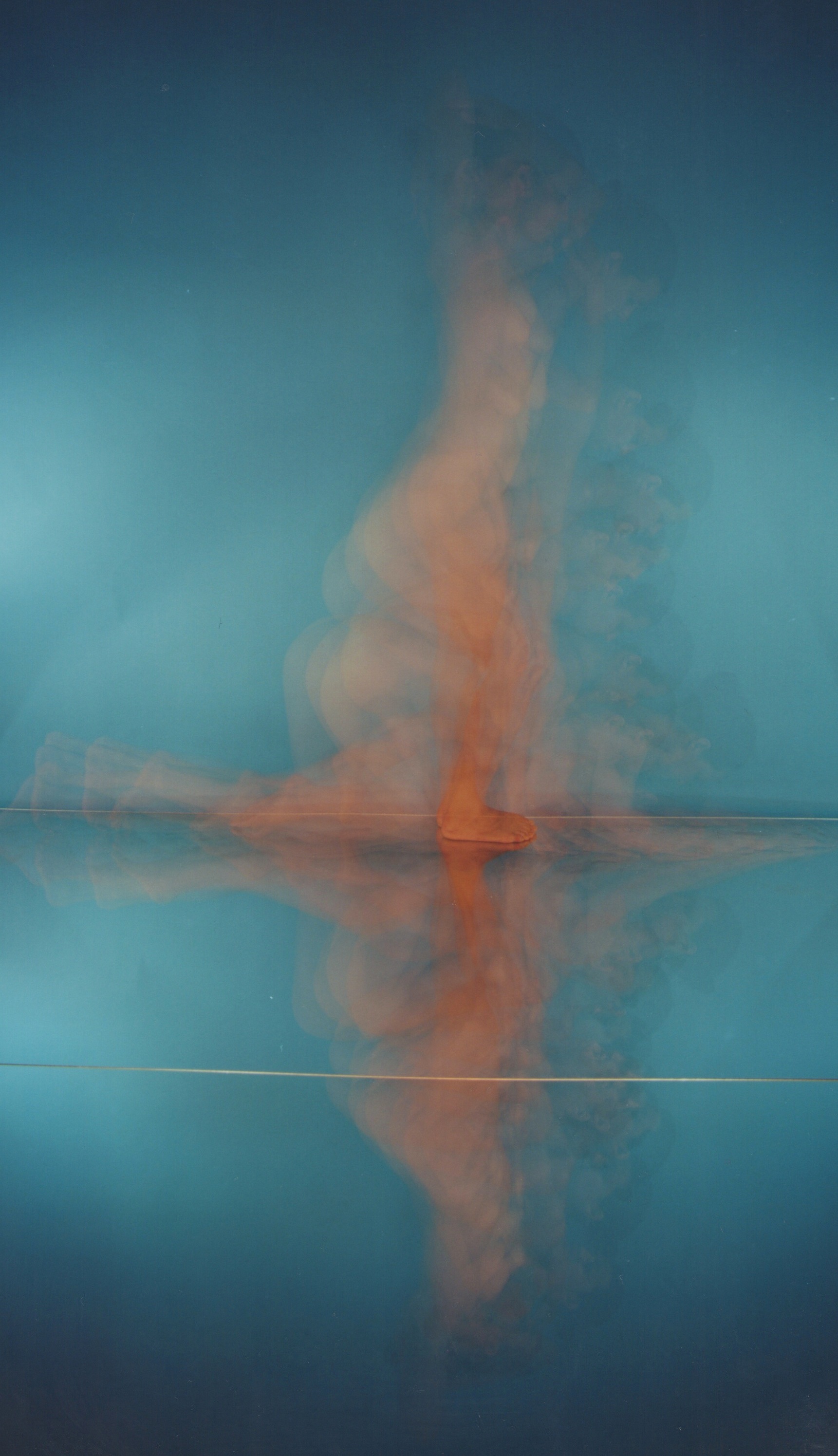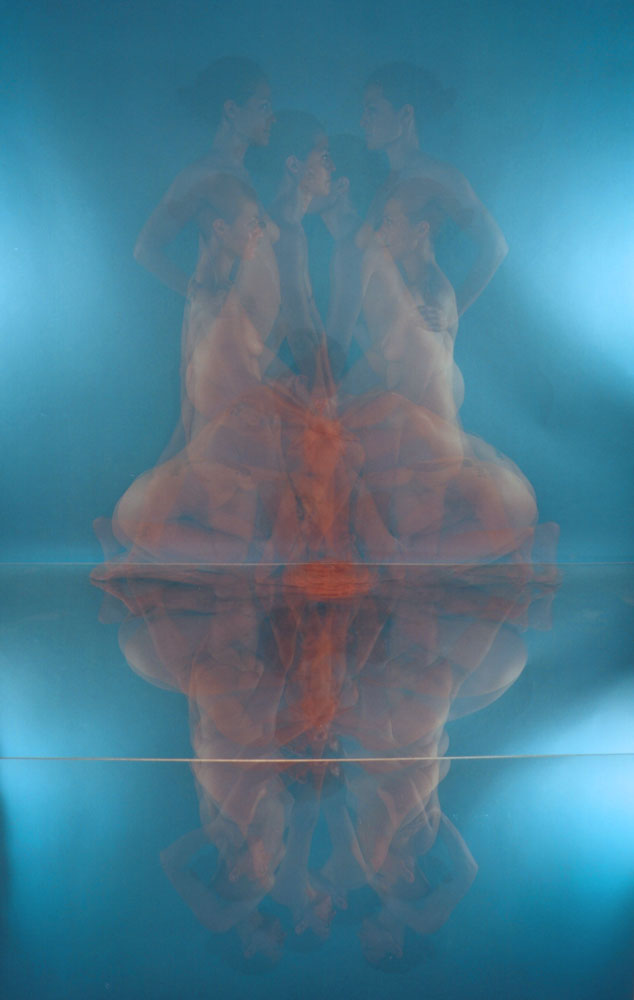Portmanteau, October 12 - November 15, 2012 Tj boulting, London, U.K.
Portmanteau, 2012, Installation view, TJ Boulting, London, U.K.
Portmanteau, 2012
TJ Boulting is delighted to present the second solo show with the gallery of Brazilian and New York based artist Juliana Cerqueira Leite. The work in this show stems from her consistent investigations into the physical action of her own body in space with materials. In particular this new work regards ideas of mirroring and movement.
As such, the title of the show ‘Portmanteau’ refers to the linguistic mechanism of morphing two existing words together to create a new one. The centrepiece of the exhibition is a large sculpture, of two separate latex forms joined in the centre; one describing the artist’s movement up stairs and the other down. This stemmed from the artist responding to the unique situation of the gallery’s underground space, and the very specific motion of going down the stairs and exiting through an inverse mirroring of this motion. The two parts were cast from a large mould composed of a set of stairs covered with a wooden tunnel, slowly lined with clay. The space remaining, as closely as possible, replicated the space occupied by the artist’s body, as it first ascended and then descended the staircase. The process of this form’s making is codified in its shape, striking a resonance with Marcel Duchamp’s 1912 painting ‘Nude descending a staircase’. This painting in turn was made from studying a series of photographs by Eadweard Muybridge of 1887, taken in fast sequence showing the movements of a nude woman descending a staircase. The work took the language of the mechanically reproduced moving image into the realm of the painterly. It was later appropriated as the theme for Gerhard Richter’s ‘Ema’, also painted from a photograph and previously taken by the artist.
Surrounding the sculpture are the large cyanotypes, ‘Summertime Blues’, produced on a rooftop in mid-summer Brooklyn. Cyanotypes were one of the earliest forms of photography, popularized by architects and engineers with the blue-print, and also by Anna Atkins, considered by some to be the first female photographer, who used the medium in 1843 to document and catalogue British algae. ‘Summertime Blues’ are multiple exposure cyanotypes, where a series of mirrored poses were struck on the light-sensitive fabric. The evidence of the summer heat is captured in the starburst forms produced by dripping sweat. The final image is therefore a composite, generating a new anatomy, an impossible body, made feasible by the mechanics of directly capturing time.
Similarly in her multiple exposure photographs, some of up to twenty exposures, the body is morphed into a cloud of motion where consistency defines a new form. They do not seek to reveal reality, as in the studies of Muybridge or the translations of Duchamp, but instead explore the formal possibilities the body’s movement can describe whilst removing itself from the recognisable.
The video work was made in collaboration with dancer Katie McGreevie, and marks the first time the artist has collaborated in this way. Katie was invited to develop a short sequence of movements that related to the photographs of Muybridge, Etienne-Jules Marey, and the award-winning dance film by Norman McLaren ‘Pas de Deux’, being aware that her figure would be overlaid and composited. As the video was shot Katie responded to the artist’s projections of how her motions might work when overlaid and composited in the final editing process. As Katie altered her movements the dance’s pace and dynamics changed yet its core motions remain the same. The overlaid images of Katie do not make evident the clear steps in her motions but combine to form a claustrophobic condensation, where her positions and movements are no longer separated and organized by time. The photos, video and the cyanotypes in the show all share common themes: multiple exposure, overlaying, compositing. They also share a common colour background: blue.
At the same time the cycle of references between the mediums of photography to painting to sculpture and video, using the movement of the artist’s body as it ascends and descends the staircase, echoes the cyclical role of art history as well. The artist describes the experience of encountering the work like cross-fading in music: “I have become very interested in finding a visual parallel to polyphony and other complex vocal and instrumental harmonics that have become important to me in contemporary music. I wondered if I could produce a show that would ‘fade in’ like a song or a video, transposing this experience to a spatial dimension. In my mind, as someone who edits video, I think of this experience as a cross-dissolve or, in the tools of a DJ, a cross-fade. This meant that it would be important to carry the experience that defined the moment in which the show was entered, in this case, coming down stairs, into the work encountered.” There is also a certain sense of cross-fading between the mediums and the art historical moments
referenced.
Towards the back of the gallery are a group of plaster forms titled ‘voids’. Produced by repeatedly carrying out rotational movements, commonly used in dance to carve and engage the space immediately surrounding the body, these motions isolate and in an abstract sense ‘pinch-off’ sections of space between the body and its curved limbs. This group, positioned to reflect the absent figure at its centre, was conceived with the pierced forms of Henry Moore’s figures in mind. These shapes are sculpted directly in plaster and displayed at the orientation and height at which they were produced. Like so many things composed underground these sculptures were made slowly and through a mindful repetition that the plaster sediments in very specific yet amorphous forms. The final encounter in the gallery however will not actually be so, as the viewer must now invert and repeat his or her own motion to exit the space, therefore intrinsically reflecting the mirrored action the artist has explored in the work.
Portmanteau, 2012, Installation view, TJ Boulting, London, U.K.
Portmanteau, 2012, Installation view, TJ Boulting, London, U.K.



